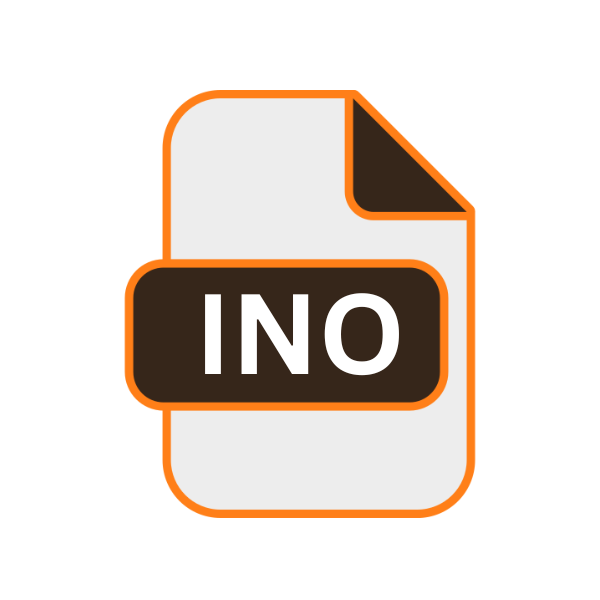.INO File Extension

Arduino Sketch
| Developer | Arduino |
| Popularity | |
| Category | Developer Files |
| Format | .INO |
| Cross Platform | Update Soon |
What is an INO file?
The .INO file extension is synonymous with Arduino sketches, programs written for Arduino microcontrollers. Arduino, a popular open-source electronics platform, utilizes these files to instruct microcontrollers to perform various tasks.
An Arduino sketch is essentially the code that dictates the behavior of an Arduino board, such as turning on an LED, reading a sensor, or communicating with other devices.
The .INO file serves as the primary medium through which users can interact with the Arduino environment, allowing for the creation, modification, and execution of these programs.
More Information.
Arduino’s inception was driven by the desire to create a simple yet powerful tool for developing interactive objects and environments.
The .INO file format was designed to be an integral part of the Arduino IDE (Integrated Development Environment), which was created to facilitate the writing and uploading of code to Arduino boards.
Initially, Arduino sketches were written in C/C++, but the Arduino IDE provided a simplified interface with pre-defined functions like setup() and loop() that abstracted much of the complexity involved in microcontroller programming.
This approach allowed beginners to start quickly and effectively, fostering a vibrant community of makers and hobbyists.
Origin Of This File.
The .INO file extension was introduced by Arduino, a project initiated by Massimo Banzi and David Cuartielles in 2005.
The primary aim of Arduino was to make electronics more accessible to artists, designers, and hobbyists by simplifying the process of programming microcontrollers.
Before Arduino, microcontroller programming was typically complex and required in-depth knowledge of hardware and low-level programming languages. Arduino democratized this field by providing a user-friendly platform and an easy-to-understand programming environment.
File Structure Technical Specification.
An .INO file is a plain text file containing code written in the Arduino programming language, which is a subset of C/C++. The structure of an .INO file typically includes the following elements:
- Header Information: This section often includes comments that describe the sketch’s purpose, author, and date.
- Setup Function: Defined using the
setup()function, this part of the code runs once when the Arduino is powered on or reset. It is used to initialize variables, pin modes, and other settings. - Loop Function: The
loop()function contains the main code that executes repeatedly as long as the Arduino is powered. This is where the core functionality of the sketch resides.
How to Convert the File?
The .INO file is designed specifically for use with the Arduino IDE, but there are scenarios where you might want to convert or use the code in other environments.
- To a Standard C/C++ File: You can rename the .INO file extension to .CPP or .C, and then compile it using a standard C/C++ compiler, but you will need to manually include necessary Arduino libraries and setup code.
- To a Hex File: The Arduino IDE compiles .INO files into a binary format (hex file) that can be uploaded to the microcontroller. This process is automated within the IDE but can be performed manually using tools like
avr-gccandavrdude.
Advantages And Disadvantages.
Advantage:
- User-Friendly: The Arduino IDE is intuitive and easy to use, making it accessible for beginners.
- Open Source: Both the hardware and software are open source, allowing for community contributions and improvements.
- Versatility: .INO files can be used to create a wide range of projects, from simple LED blinkers to complex robotics.
Disadvantage:
- Limited Scope: The simplicity of the Arduino language can be limiting for more advanced applications that require low-level control or optimization.
- Platform Dependency: The .INO file format is specific to the Arduino ecosystem, which may not be compatible with other microcontroller platforms.
- Size Constraints: Arduino boards often have limited memory and processing power, which can constrain the complexity of the sketches.
How to Open INO?
Open In Windows
- Arduino IDE: Download and install the Arduino IDE from the Arduino website. Open the IDE, then navigate to
File > Openand select your .INO file. - Text Editor: You can open .INO files with any text editor, such as Notepad++ or Visual Studio Code, but editing and compiling will require the Arduino IDE.
Open In Linux
- Arduino IDE: Install the Arduino IDE from your distribution’s package manager or directly from the Arduino website. Open it and use
File > Opento access your .INO file. - Text Editor: Similar to Windows, you can use text editors like
gedit,nano, orvimto view or edit .INO files, though compilation will still need the Arduino IDE.
Open In MAC
- Arduino IDE: Download the Arduino IDE from the Arduino website and install it. Open the IDE and use
File > Opento load your .INO file. - Text Editor: Use text editors like TextEdit, Sublime Text, or Visual Studio Code to open .INO files for viewing or editing.
Open In Android
- ArduinoDroid: An app available on the Google Play Store, ArduinoDroid allows you to write and upload sketches to Arduino boards directly from your Android device.
- Text Editor Apps: Use text editor apps to view or edit .INO files, though uploading will still require a proper Arduino interface.
Open In IOS
- Arduino Science Kit: As of now, there is no direct Arduino IDE available for iOS, but you can use cloud-based platforms or remote desktop applications to access and modify .INO files.
- Text Editor Apps: Similar to Android, use apps designed for code editing to view or edit .INO files, though direct uploading to Arduino boards is not supported.
Open in Others
- Online Platforms: Websites like Arduino Web Editor provide an online environment to write, compile, and upload Arduino sketches. These platforms are accessible from various devices with internet connectivity.













